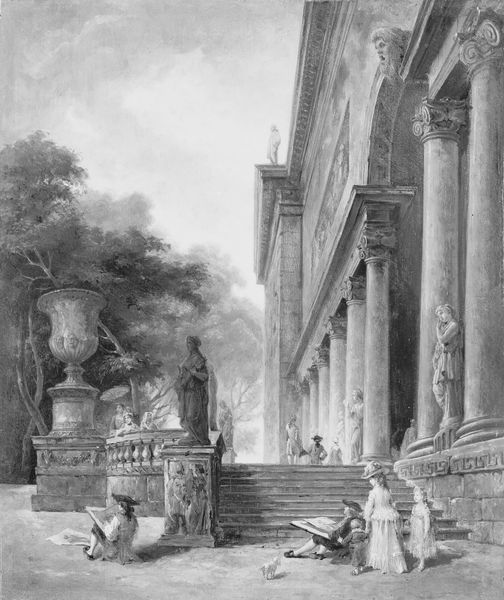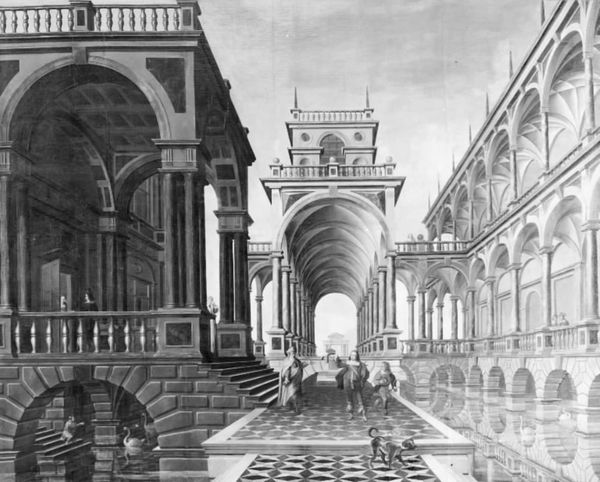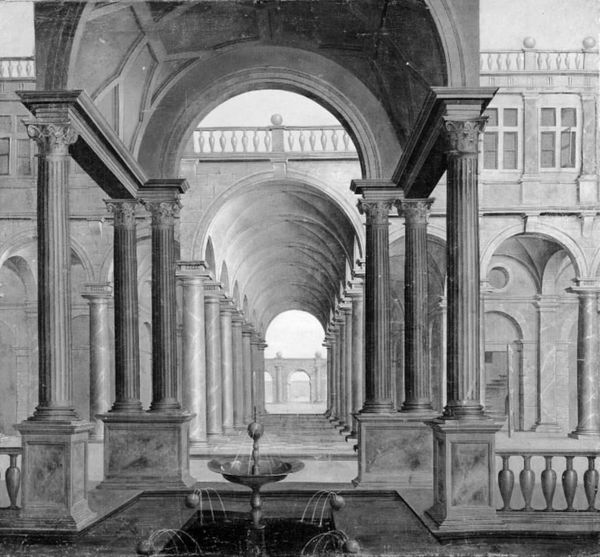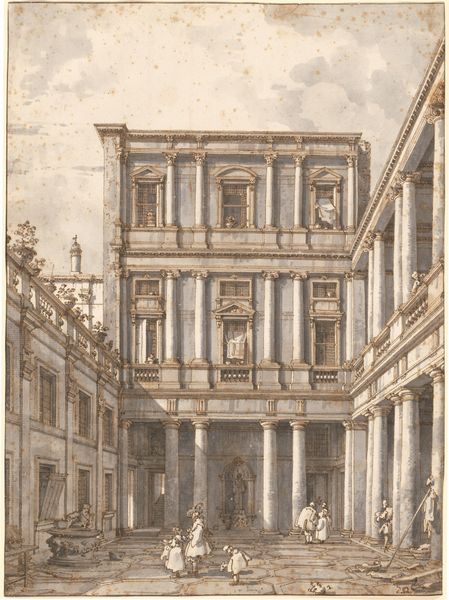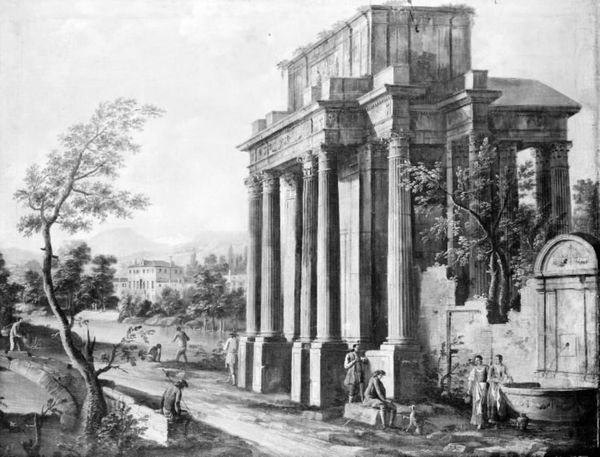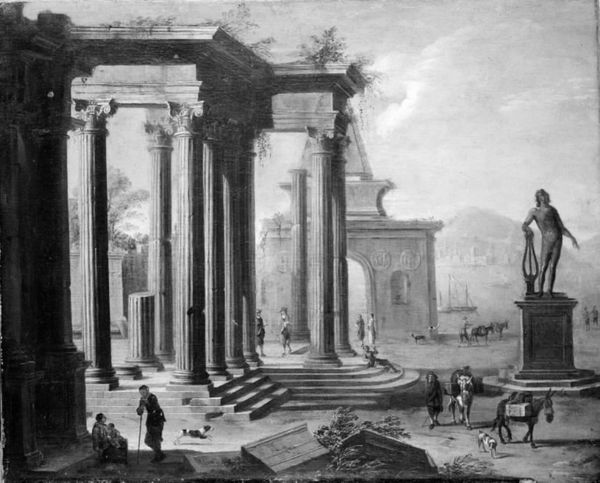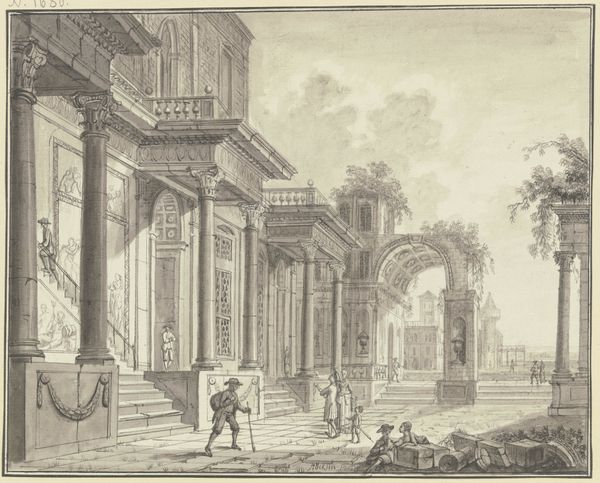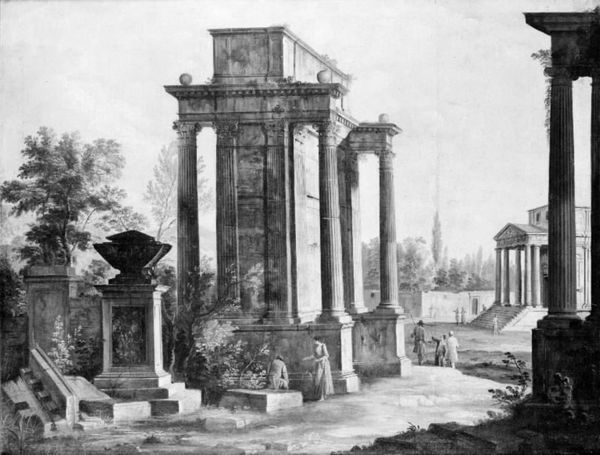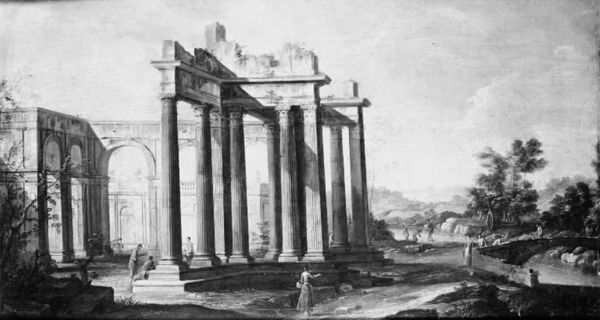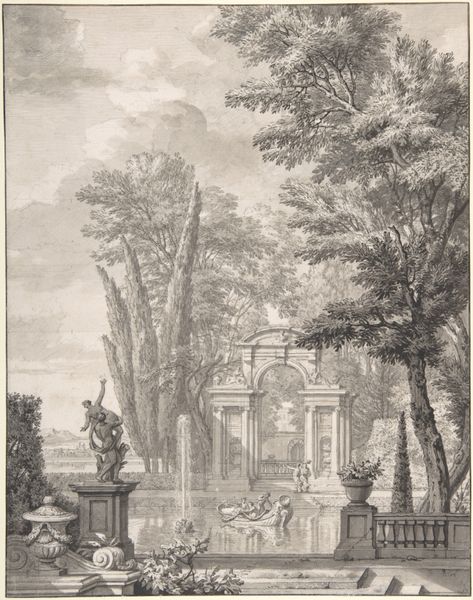
painting, oil-paint, wood
#
baroque
#
dutch-golden-age
#
painting
#
oil-paint
#
black and white
#
monochrome photography
#
wood
#
cityscape
#
genre-painting
#
history-painting
#
monochrome
#
monochrome
Dimensions: 49.5 cm (height) x 55 cm (width) (Netto)
Curator: "Elegant Company in Front of a Palace," dating to 1644, by Dirck van Delen, rendered in oil on wood. The monochromatic palette lends it an ethereal, almost dreamlike quality. What do you observe? Editor: The architectural rendering is so precise, almost photographic. It's captivating, how van Delen creates such depth with what appears to be shades of grey, and how he is making a clear distinction in texture by emphasizing light differently based on different features. Is there a method he is implementing here? Curator: Note the interplay between light and shadow, and its critical function in defining form. Van Delen meticulously modulates light across the facades of the palace and the figures, thereby achieving not only spatial depth but also a rhythmic articulation of the architectural elements. Semiotically, consider how this compositional strategy might be interpreted in terms of the representation of power and social hierarchy. The sharp detail brings a specific focus to what looks like columns. Are you seeing what I am seeing? Editor: I do now that you pointed it out! The structure and order make sense in comparison to the background figures. So he is purposefully using composition to draw attention to specific structures of social stature? Curator: Precisely. Furthermore, attend to the perspective lines converging toward a vanishing point deep within the pictorial space, which augment the illusion of three-dimensionality and guide the viewer’s gaze. Also observe how his light placement further adds this quality of spatial depth. It gives new dimension to what can easily be seen as just "old artwork." Editor: So it's not just about replicating reality, but using these formal techniques to construct a specific meaning or commentary. Very cool! Curator: Indeed. Understanding the visual syntax allows us to decode the deeper layers of meaning embedded within the work. I think I understand and see this a lot better now. Editor: Yes! I definitely am also going to implement this approach from now on when approaching similar architectural paintings.
Comments
No comments
Be the first to comment and join the conversation on the ultimate creative platform.

